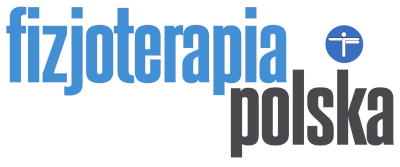Abstract
Myofascial pain syndrome (MPS) is one of the most common ailments associated with the human musculoskeletal system, characterised by the presence of the so-called trigger points (TrP – trigger point; MTrPs – myofascial trigger points). The International Association for the Study of Pain indicates that MPS may affect approximately one-third of people with chronic musculoskeletal pain, and that there is a lack of appropriate classification which can be attributed to a misunderstanding and/or misinterpretation of the pathophysiology. Given the diverse causes of pain syndromes in myofascial structures, it is vital to properly select and integrate therapeutic methods. The scientific literature indicates that treatment programmes should include a variety of manual therapy methods and rehabilitation exercises. Trigger point therapies, such as dry needling or dry cupping, are also widely used. At the heart of the success of rehabilitation programmes, in the opinion of the authors of this publication, is their multimodality, i.e. selection of therapeutic methods based on the cause of the pain, providing for measurable, reproducible diagnostic methods in therapy.
Aim of the study. The aim of this study is to analyse and infer conclusions on multimodal myofascial pain therapy programmes.
Material and methods. Given the complex research problem set as the aim, the study was carried out through a literature review in terms of two criteria:
Criterion I (C I): analysis of the literature on the etiology and pathogenesis of myofascial pain (i.e. causes and triggers, symptoms, social and environmental factors determining the onset of MPS), diagnostic procedures (initial diagnosis and ongoing monitoring of treatment outcomes), and therapeutic methods used in the course of MPS.
Criterion II (C II): a literature study of research publications addressing multimodal programmes for myofascial pain therapy, with their qualitative evaluation using the modified PEDro scale, and empirical testing of hypotheses based on the literature study and the analysis made in Part I.
Data sources: PubMed, SCOPUS, Science Direct, MEDLINE, PEDro, Cochrane, Embase, Web of Science Core Collection, Google Scholar electronic databases were searched systematically, restricting the languages to English and German only.
Results. The analysis of the literature showed that the causes, symptoms and associations of myofascial pain have been described in detail. There are also numerous reports on a variety of therapeutic methods, together with a precisely described methodology for their implementation. It is not uncommon to recommend combining methods into multimodal programmes, which unfortunately does not mean that there are many such programmes or that studies on MPS are consistent. The literature study on multimodal treatment programmes for MPS revealed that there is no correlation between its pathogenesis and a purposeful selection of specific therapeutic methods. In a small number of cases, a complex etiopathogenesis led to the formation of multidisciplinary teams. This may be associated with the absence of strict recommendations on the diagnostic methods applicable to the assessment of MPS.
Conclusions. 1. Multimodal programmes for the treatment of musculoskeletal pain, notably MPS and MTrPs, should include a detailed and comprehensive diagnosis (structural, biochemical, psycho-emotional) which should serve as the basis for the formation of interdisciplinary rehabilitation teams. 2. Musculoskeletal diagnosis, in addition to radiological assessment, should include measurable techniques of postural and functional assessment (such as pedobarography, wearable sensors, assisted anthropometry, i.e. photogrammetry, videogrammetry, etc.), aimed primarily at the ongoing assessment of posture. 3. The choice of therapeutic methods and patient education should be based on the causes of the patient’s pain, taking into account systemic diseases, postural defects, lifestyle and psycho-emotional state. 4. Scientific research in multimodal treatment programmes should be carried out in randomised groups, with due attention to the methodologies of diagnostic and therapeutic procedures and group selection.
Keywords
chronic pain, myofascial pain, manual therapy, exercise, multimodal programmes

